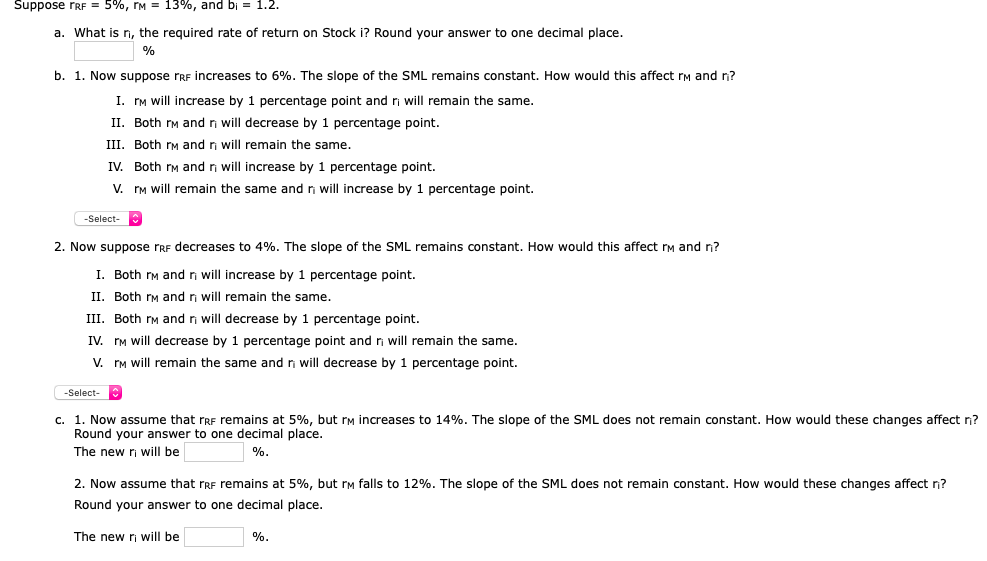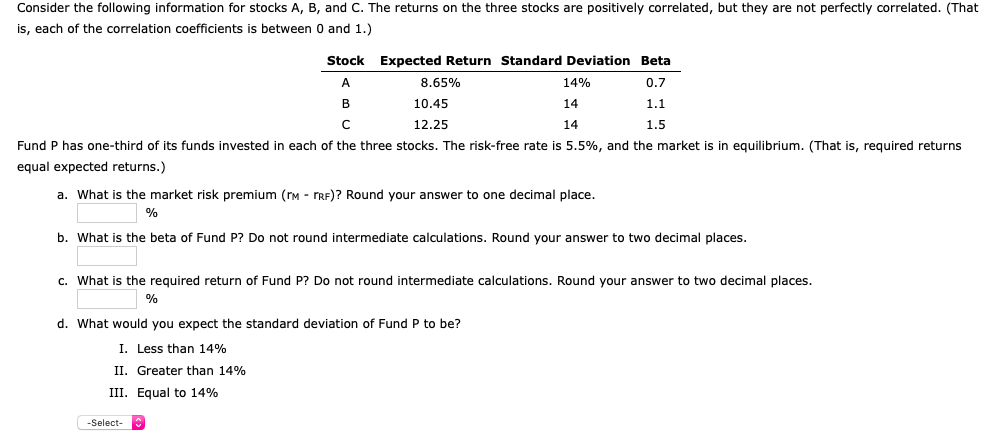SOS help with both


Suppose IRF = 5%, M = 13%, and bi = 1.2. a. What is n, the required rate of return on Stock i? Round your answer to one decimal place. % b. 1. Now suppose rrf increases to 6%. The slope of the SML remains constant. How would this affect rm and n? I. rm will increase by 1 percentage point and i will remain the same. II. Both rm and n will decrease by 1 percentage point. III. Both rm and i will remain the same. IV. Both rm and n will increase by 1 percentage point. V. rm will remain the same and will increase by 1 percentage point. -Select- 2. Now suppose rre decreases to 4%. The slope of the SML remains constant. How would this affect rm and n? I. Both rm and i will increase by 1 percentage point. II. Both rm and i will remain the same. III. Both rm and will decrease by 1 percentage point. IV. rm will decrease by 1 percentage point and i will remain the same. V. rm will remain the same and n will decrease by 1 percentage point. -Select- c. 1. Now assume that rrr remains at 5%, but rm increases to 14%. The slope of the SML does not remain constant. How would these changes affect n? Round your answer to one decimal place. The new ri will be %. 2. Now assume that ree remains at 5%, but rm falls to 12%. The slope of the SML does not remain constant. How would these changes affect n? Round your answer to one decimal place. The new ri will be %. Consider the following information for stocks A, B, and C. The returns on the three stocks are positively correlated, but they are not perfectly correlated. (That is, each of the correlation coefficients is between 0 and 1.) Stock Expected Return Standard Deviation Beta A 8.65% 14% 0.7 B 10.45 14 1.1 12.25 14 1.5 Fund P has one-third of its funds invested in each of the three stocks. The risk-free rate is 5.5%, and the market is in equilibrium. (That is, required returns equal expected returns.) a. What is the market risk premium (RM - TRF)? Round your answer to one decimal place. % b. What is the beta of Fund P? Do not round intermediate calculations. Round your answer to two decimal places. C. What is the required return of Fund P? Do not round intermediate calculations. Round your answer to two decimal places. % d. What would you expect the standard deviation of Fund P to be? I. Less than 14% II. Greater than 14% III. Equal to 14% -Select








